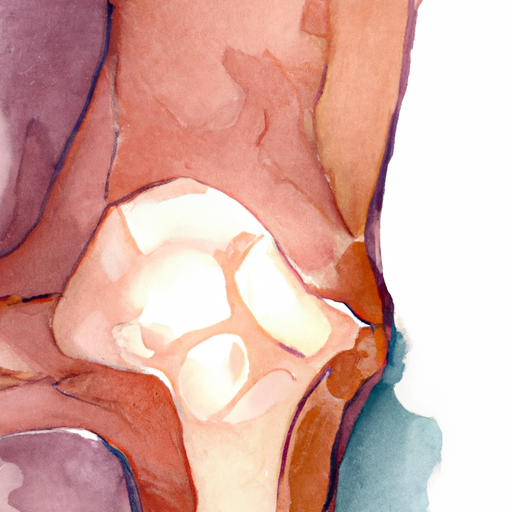Have you ever heard of the blue clay diet? This unusual and mysterious phenomenon has been gaining attention in recent years, leaving many people wondering what it is and how it affects those who practice it. In this article, we will delve into the world of the blue clay diet, exploring its diagnosis, symptoms, causes, and more. From understanding the basics to uncovering the potential risks and myths surrounding this diet, we aim to provide you with a comprehensive guide to this peculiar trend. So, fasten your seatbelts and get ready to embark on a journey into the enigmatic world of the blue clay diet.
1. "Understanding Blue Clay Diet: Diagnosis, Symptoms, and Causes"
Blue clay diet, also known as geophagy, refers to the practice of consuming clay or soil. While it may seem unusual to some, geophagy has been a part of human culture for centuries and is still prevalent in various parts of the world. However, it is important to understand the potential health implications associated with this practice.
Diagnosing individuals who engage in the blue clay diet can be challenging as it often goes unnoticed or unreported. Generally, diagnosis is based on self-reporting by individuals who admit to consuming clay or soil. In some cases, healthcare professionals may perform laboratory tests to confirm the presence of clay particles in the digestive system.
Symptoms of the blue clay diet can vary depending on the quantity and composition of the clay or soil ingested. Mild symptoms may include stomach discomfort, constipation, or changes in bowel movements. In more severe cases, individuals may experience nutrient deficiencies, weight loss, anemia, or gastrointestinal obstructions.
The causes behind the blue clay diet are multifaceted and can be influenced by cultural, nutritional, and psychological factors. In some cultures, geophagy is practiced as a traditional remedy for various ailments or as a source of essential minerals. Nutritional deficiencies, particularly deficiencies in iron, calcium, or zinc, can also drive individuals to engage in geophagy. Additionally, some individuals may develop pica, a psychological disorder characterized by the persistent craving and consumption of non-food items, including clay.
It is crucial to recognize that the blue clay diet can pose significant health risks. Clay and soil can contain harmful substances such as heavy metals, bacteria, parasites, or toxins, which can lead to serious health complications. Prolonged consumption of clay may interfere with nutrient absorption, leading to malnutrition and negatively impacting overall health.
Treatment for individuals engaged in the blue clay diet primarily focuses on addressing the underlying causes and providing necessary medical interventions. Healthcare professionals may recommend nutritional supplements to correct any deficiencies, along with counseling or therapy to address psychological factors contributing to geophagy. In severe cases, medical interventions may be required to treat complications arising from geophagy.
In conclusion, understanding the blue clay diet involves recognizing the diagnosis, symptoms, and causes associated with this practice. While geophagy is deeply rooted in cultural traditions and nutritional deficiencies, it is essential to address the potential health risks it poses. Proper diagnosis, treatment, and education are crucial in promoting the overall well-being of individuals engaged in the blue clay diet.
2. "Treating Blue Clay Diet: Effective Strategies and Potential Therapies"
Treating Blue Clay Diet: Effective Strategies and Potential Therapies
When it comes to addressing the Blue Clay Diet, it is essential to adopt a comprehensive approach that focuses on both the physical and psychological aspects of the condition. While there is no specific medication or therapy designed solely for treating this disorder, several strategies can help individuals overcome their cravings for blue clay and alleviate associated symptoms.
1. Seeking Professional Help: The first step in treating Blue Clay Diet is to consult a healthcare professional, such as a doctor or a registered dietitian. These experts can provide a proper diagnosis, evaluate the severity of the condition, and guide individuals towards appropriate treatment options.
2. Psychological Counseling: As the Blue Clay Diet often stems from underlying psychological factors, counseling or therapy sessions can be highly beneficial. Cognitive-behavioral therapy (CBT) is one of the most effective approaches, as it helps individuals identify and replace unhealthy thoughts and behaviors with more positive ones. Additionally, therapy can address any emotional or mental health issues that may contribute to the craving for blue clay.
3. Nutritional Education: Educating individuals about proper nutrition is crucial in managing the Blue Clay Diet. A registered dietitian can offer personalized advice and guidance on adopting a well-balanced diet that meets all nutritional requirements. This approach not only helps individuals understand the negative effects of consuming clay but also provides alternative food choices that can satisfy their cravings in a healthier way.
4. Behavioral Modifications: Developing healthy habits and routines is essential in overcoming the Blue Clay Diet. Individuals should focus on gradually replacing the habit of consuming blue clay with healthier alternatives, such as chewing on sugar-free gum or snacking on fruits and vegetables. Creating a supportive environment, free from triggers and temptations, can also aid in breaking the cycle of craving and consumption.
5. Support Groups: Joining support groups or seeking peer support can significantly help individuals dealing with the Blue Clay Diet. Sharing experiences, challenges, and success stories can provide a sense of community and motivation to overcome the condition. These groups can also offer valuable insights and coping strategies from individuals who have successfully managed their cravings for blue clay.
Remember, treating the Blue Clay Diet requires patience and commitment. It is important to understand that overcoming this condition may take time, and setbacks are normal. By adopting a multi-faceted approach that combines professional guidance, psychological counseling, nutritional education, behavioral modifications, and social support, individuals can gradually regain control over their cravings and ultimately lead a healthier, clay-free lifestyle.
3. "Unveiling the Mysterious Blue Clay Diet: Myths, Risks, and Precautions"
The Blue Clay Diet has gained significant attention in recent years, touted as a natural remedy with various health benefits. However, it is essential to separate fact from fiction when considering this unconventional dietary practice. In this section, we delve into the myths surrounding the Blue Clay Diet, its potential risks, and the precautions one should take before embarking on this regime.
Firstly, it is crucial to understand that the Blue Clay Diet is not a medically recognized treatment for any specific condition. While some proponents claim it can aid in detoxification, weight loss, and improved digestion, there is limited scientific evidence to support these assertions. The lack of clinical studies and research on the Blue Clay Diet makes it difficult to assess its true efficacy.
One common myth associated with the Blue Clay Diet is that consuming blue clay can eliminate toxins from the body. Proponents argue that the clay’s high mineral content can bind to harmful substances and remove them from the system. However, the human body already possesses efficient detoxification mechanisms through organs such as the liver and kidneys. Relying solely on a clay diet for detoxification may not provide the comprehensive cleansing proponents claim.
Moreover, the risks associated with the Blue Clay Diet cannot be overlooked. Blue clay, like any clay, can contain heavy metals and impurities that may be harmful when ingested. These impurities can include arsenic, lead, and other contaminants. Ingesting clay over prolonged periods may result in heavy metal poisoning or other adverse health effects. Therefore, it is crucial to ensure the clay used in the diet is sourced from a reputable supplier and has undergone rigorous testing for purity.
Additionally, the Blue Clay Diet may pose potential gastrointestinal risks. Clay consumption can lead to constipation, as it absorbs water and can cause the stool to harden. This could result in discomfort, bloating, and digestive disturbances. Individuals with pre-existing digestive conditions, such as irritable bowel syndrome or inflammatory bowel disease, should exercise caution before considering the Blue Clay Diet.
While the Blue Clay Diet may have its risks, there are precautions individuals can take if they still wish to explore this dietary practice. It is essential to consult with a healthcare professional before embarking on any unconventional diet, especially if you have pre-existing health conditions. A medical professional can evaluate your specific circumstances and advise on the potential risks and benefits associated with the Blue Clay Diet.
Furthermore, choosing high-quality and food-grade blue clay from reputable sources is crucial. Ensure the clay is free from impurities and contaminants, and be cautious of products claiming miraculous health benefits without scientific evidence to support their claims.
In conclusion, the Blue Clay Diet remains a mysterious and relatively unexplored dietary practice. While some individuals may swear by its benefits, it is crucial to approach this diet with caution. Separating myths from facts, understanding the potential risks involved, and consulting with a healthcare professional can help individuals make informed decisions about whether the Blue Clay Diet is right for them.

